แบตเตอรี่ลิเธียม พลังงาน 83% ของอุปกรณ์อิเล็กทรอนิกส์แบบพกพาทั่วโลก แต่การจัดการที่ไม่เหมาะสมในระหว่างการขนส่งทำให้เกิดเหตุการณ์ไฟไหม้การบิน 23%
เพื่อความปลอดภัยในการขนส่งทางอากาศถนนหรือทางรถไฟการปฏิบัติตามมาตรฐาน UN 38. 3 เป็นสิ่งจำเป็น การทดสอบการขนส่ง 38.3 แสดง 8 ข้อกำหนดส่วนบุคคลที่ต้องปฏิบัติตามเพื่อให้เป็นไปตามมาตรฐาน
การจำลองระดับความสูง
การทดสอบนี้เป็นการจำลองสภาวะในการบรรทุกสินค้าของเครื่องบินที่ระดับความสูงไม่เกิน 15,000 เมตร ในสภาพแวดล้อมนี้ แบตเตอรี่จะต้องเผชิญกับความกดอากาศต่ำมาก 11.6 กิโลปาสกาลเป็นเวลาหกชั่วโมง การทดสอบจะผ่านหาก: แบตเตอรี่ไม่มีการสูญเสียมวล; วาล์วแรงดันเกินยังคงปิดอยู่ ตัวเรือนแบตเตอรี่ไม่มีรอยแตกหรือรอยรั่ว และระดับแรงดันไฟฟ้าแตกต่างจากค่าเริ่มต้นสูงสุด 10%

การทดสอบความร้อน
หลังจากการทดสอบการจำลองระดับความสูงเสร็จสิ้นแล้ว ผู้เชี่ยวชาญจะดูรายละเอียดว่าแบตเตอรี่ลิเธียมจัดการกับอุณหภูมิที่สูงมากได้อย่างไร สิ่งนี้สามารถสร้างแรงกดดันต่อซีลและการเชื่อมต่อไฟฟ้าภายใน
แบตเตอรี่จะถูกเก็บไว้อย่างน้อยหกชั่วโมงที่อุณหภูมิ 72 องศาเซลเซียส จากนั้นจึงทำให้เย็นลงถึง -40 องศาเซลเซียสในอีกหกชั่วโมงต่อมา
ใน โฮโลแบตเตอรี่เราทำขั้นตอนการทดสอบนี้ในห้องช็อกความร้อนที่ออกแบบมาเป็นพิเศษ โดยแต่ละรอบมี 10 รอบ
ในที่สุดแบตเตอรี่จะถูกเก็บไว้ที่อุณหภูมิห้อง (20 ° C) อีก 24 ชั่วโมง ในการผ่านการทดสอบเกณฑ์ทั้งหมดที่กล่าวถึงภายใต้การจำลองระดับความสูงจะต้องตรงกับ

การทดสอบการสั่นสะเทือน
ส่วนที่สามของการทดสอบการขนส่ง UN 38.3 เกี่ยวข้องกับการใส่แบตเตอรี่ลงในอุปกรณ์ที่สั่นระหว่าง 7 ถึง 200 ครั้งต่อวินาทีหรือที่เรียกว่าเฮิรตซ์ การทดสอบนี้ออกแบบมาเพื่อใช้เวลาทั้งหมด 3 ชั่วโมง และจำลองการกระตุกของรถบรรทุกทั่วไปขณะขับขี่ เกณฑ์ที่กล่าวถึงในการจำลองระดับความสูงยังใช้ในกรณีนี้ด้วย
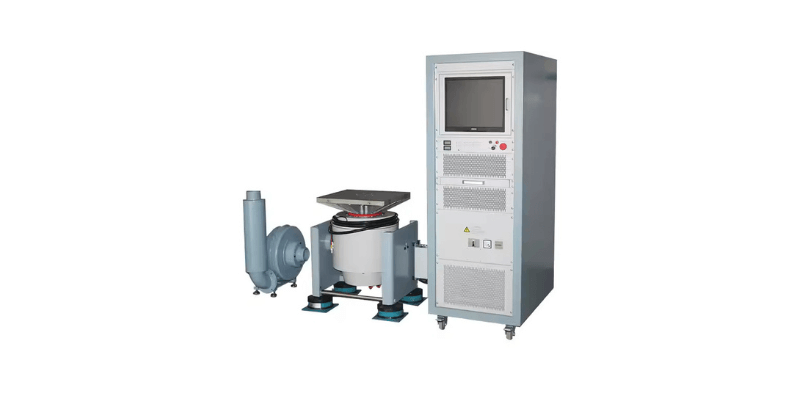
การทดสอบแรงกระแทก
หากคุณต้องการหลีกเลี่ยงความเสียหายที่อาจเกิดขึ้นกับแบตเตอรี่การทดสอบผลกระทบคือสิ่งที่คุณต้องการ ที่ ประเภทของแบตเตอรี่ลิเธียม และขนาดของพวกเขาจะกำหนดวิธีการทำงานหลังจากใช้แรงในระดับหนึ่ง ขึ้นอยู่กับแบตเตอรี่ 150 กรัม/6ms หรือ 50 กรัม/11ms อาจส่งผลกระทบต่อที่อยู่อาศัย เกณฑ์ที่ระบุไว้ในการจำลองระดับความสูงใช้ที่นี่เช่นกัน
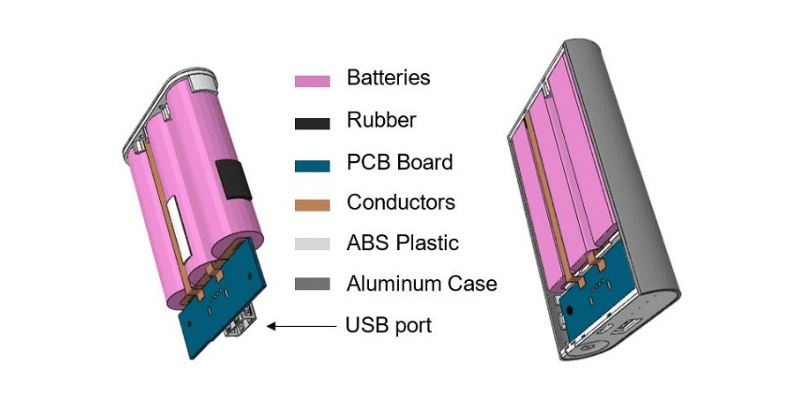
การทดสอบการลัดวงจรภายนอก
ในการทดสอบนี้แบตเตอรี่จะถูกทำให้ร้อนจากภายนอกถึง 57 ± 4 ° C ก่อนที่จะเกิดการลัดวงจรภายนอก
เมื่ออุณหภูมิของแบตเตอรี่เพิ่มขึ้น จะต้องไม่เกิน 170°C หลังจากผ่านไป 60 นาที จะต้องเย็นลงเหลือ 57°C
การทดสอบจะผ่านก็ต่อเมื่อไม่พบความเสียหายต่อตัวเรือนแบตเตอรี่ภายในเวลาไม่เกินหกชั่วโมงหลังจากนั้น
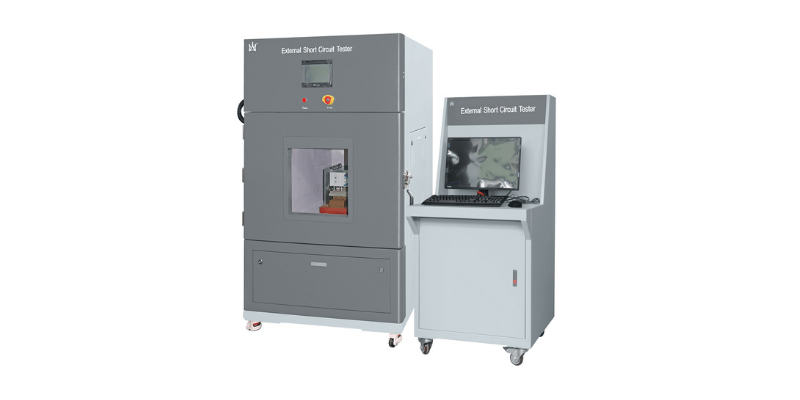
การทดสอบบดขยี้
การทดสอบนี้ดำเนินการกับเซลล์เท่านั้นและจำลองความเสียหายภายนอก เช่น ความเสียหายที่เกิดขึ้นจากอุบัติเหตุรถชน
สำหรับสิ่งนี้ ควรคำนึงถึงประเภทของเซลล์ที่เรากำลังติดต่อด้วย และเครื่องปั๊มที่ใช้ในการทำลายเซลล์ด้วยความลึกและขนาดที่กำหนดไว้ล่วงหน้า หากทำเช่นนี้ อาจเกิดไฟฟ้าลัดวงจรภายในเซลล์ที่แตกหักอยู่แล้วได้
เพื่อให้ผ่าน อุณหภูมิของตัวเรือนจะต้องต่ำกว่า 170 องศาเซลเซียส และต้องไม่แสดงรอยแตกหรือสัญญาณของความร้อนสูงเกินไปภายในเวลาไม่เกิน 6 ชั่วโมงหลังการทดสอบ
| การทดสอบ | ผลกระทบ | บดขยี้ |
| ใบสมัคร | แบตเตอรี่ทั้งหมด | เซลล์เท่านั้น |
| โปรไฟล์บังคับ | 150gn/6ms (เล็ก) หรือ 50gn/11ms (ใหญ่) | ลดลง 9.1kg จาก 61 ซม. หรือ 13kn Crush |
| ตัวชี้วัดสำคัญ | การเก็บแรงดันไฟฟ้า≥90% | อุณหภูมิกรณี <170 ° C ความเสียหายหลัง |
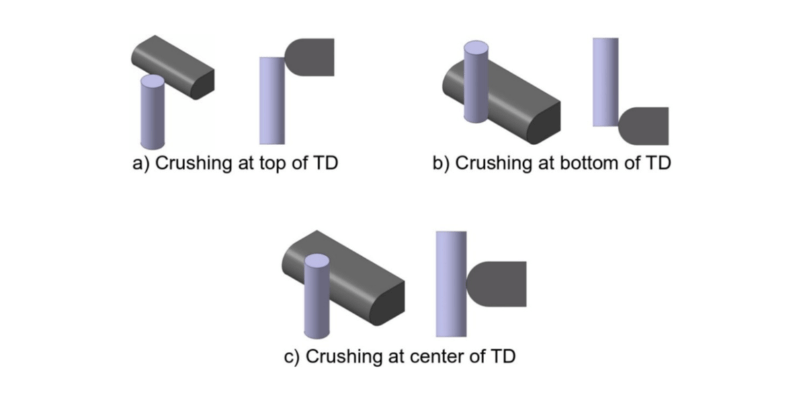
การทดสอบการชาร์จไฟเกิน
การทดสอบการขนส่ง UN 38.3 กำหนดการทดสอบการชาร์จไฟเกินสำหรับแบตเตอรี่ลิเธียมแบบชาร์จได้ทั้งหมด
เป็นเวลา 24 ชั่วโมง กระแสไฟชาร์จสูงสุดที่อนุญาตจะจ่ายให้กับแบตเตอรี่เป็นสองเท่า หากไม่มีความผิดปกติในช่วงเวลานั้น แบตเตอรี่จะถูกทิ้งไว้ในที่ปลอดภัยเป็นเวลา 7 วัน
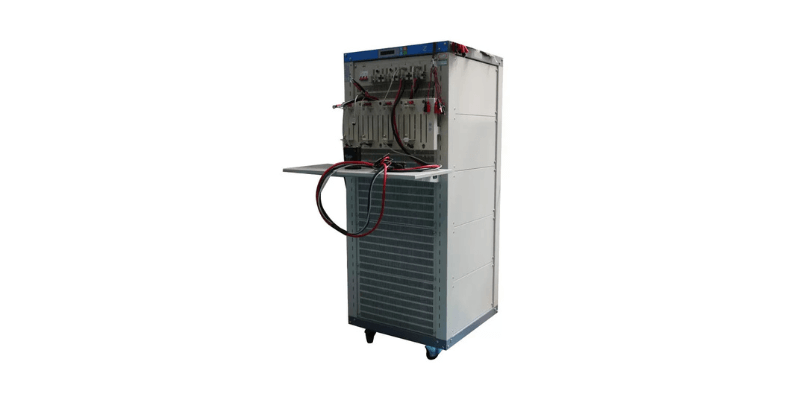
การทดสอบการคายประจุอย่างรวดเร็ว
เพื่อความปลอดภัย เซลล์ยังได้รับการทดสอบในสภาวะที่ไม่เอื้ออำนวยด้วย ซึ่งทำได้โดยกำหนดให้กระแสไฟเกินค่าสูงสุดที่อนุญาต
คุณจะต้องทำซ้ำขั้นตอนนี้หลายครั้ง เมื่อมีการชาร์จมากเกินไป การคายประจุอย่างรวดเร็วไม่ควรทำให้แบตเตอรี่เสียหายแต่อย่างใด จึงจะถือว่าการทดสอบนี้ประสบความสำเร็จ

คำถามที่พบบ่อย
UN38.3 มีอายุการใช้งานเท่าใด
การรับรอง UN38.3 มีอายุหนึ่งปีปฏิทิน โดยจะสิ้นสุดในวันที่ 31 ธันวาคมของปีเดียวกัน ตัวอย่างเช่น ใบรับรองที่ออกในวันที่ 19 ธันวาคม 2024 จะหมดอายุในวันที่ 31 ธันวาคม 2024 หลังจากหมดอายุแล้วสามารถต่ออายุได้หนึ่งปี ตัวอย่างเช่น ใบรับรองที่ออกเมื่อวันที่ 1 มกราคม 2025 จะใช้ได้จนถึงวันที่ 31 ธันวาคม 2025
หากฉันต้องการบรรจุภัณฑ์สองประเภทสำหรับแบตเตอรี่ลิเธียม ฉันสามารถใช้ UN38.3 หนึ่งบรรจุภัณฑ์สำหรับทั้งสองประเภทได้หรือไม่
การรับรอง UN38.3 แต่ละรายการใช้กับวิธีจัดส่งแบตเตอรี่ลิเธียมวิธีเดียวเท่านั้น มีสามวิธี:
- 965: แบตเตอรี่ถูกส่งมาโดยลำพัง
- 966: แบตเตอรี่เต็มไปด้วยอุปกรณ์
- 967: มีแบตเตอรี่อยู่ในอุปกรณ์และไม่สามารถถอดออกได้ง่าย
การเพิ่มวิธีจัดส่งจะต้องเสียค่าธรรมเนียม 350 ดอลลาร์สหรัฐฯ ต่อวิธี
บทสรุป
ตามแนวทางของ UN 38.3 แบตเตอรี่ต้องผ่านการทดสอบ 8 ครั้งก่อนจึงจะขนส่งทางรถไฟ ถนน หรือทางอากาศได้
Holo Battery สามารถดำเนินการขั้นตอนการทดสอบ UN 38.3 ทั้งหมด 8 ขั้นตอนในศูนย์ทดสอบของตนเอง ในฐานะลูกค้า นั่นหมายความว่าแบตเตอรี่ทั้งหมดที่คุณซื้อจาก Holo Battery จะต้องเป็นไปตามข้อกำหนดเหล่านี้และได้รับการรับรองตามนั้น
บทความที่เกี่ยวข้อง:

